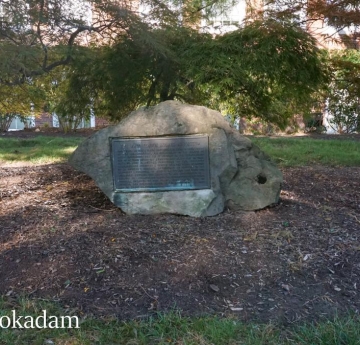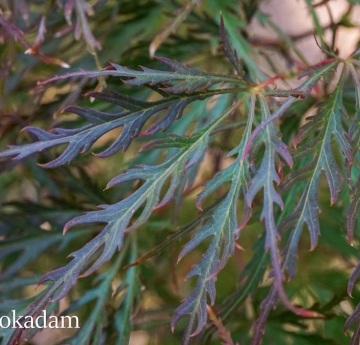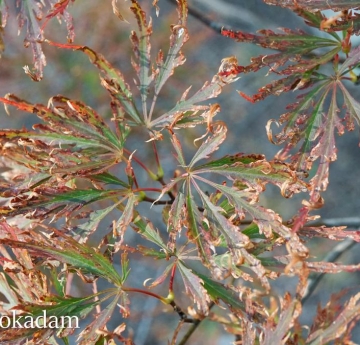Scientific name: Acer palmatum
Common name: Japanese Maple
Native: No
Native range: It is native to China, Korea, and Japan [2,4].
Distribution in North America: Click to view the USDA Plants Database page for A. palmatum.
USDA Zones: 5B-8 [1]
Maximum age: Unclear, however its lifespan is likely similar to that of other maples, which live for upwards of 100 years [5].
Ecology: It is unclear how North American wildlife use the Japanese maple, however it is listed by one source as "not attracting wildlife" [1], and North American fauna prefer native maples over non-natives.
Ethnobotany: Its long-lobed leaves, which range from green to eggplant to blood-crimson, make it an attractive ornamental species and a common fixture in plantings and bonsai [1,2,4]. Members of the Acer genus contain anti-inflammatory compounds that may be useful in the treatment of cancers and chronic pain [3].
[1] http://hort.ufl.edu/database/documents/
pdf/tree_fact_sheets/acepala.pdf
[2] https://canr.udel.edu/udbg/?plant=acer-palmatum
[3] https://www.researchgate.net/publication/
301756903_Traditional_uses_phytochemistry_and_
pharmacology_of_the_genus_Acer_maple_A_review
[4] https://plants.ces.ncsu.edu/plants/acer-palmatum-var-dissectum/




